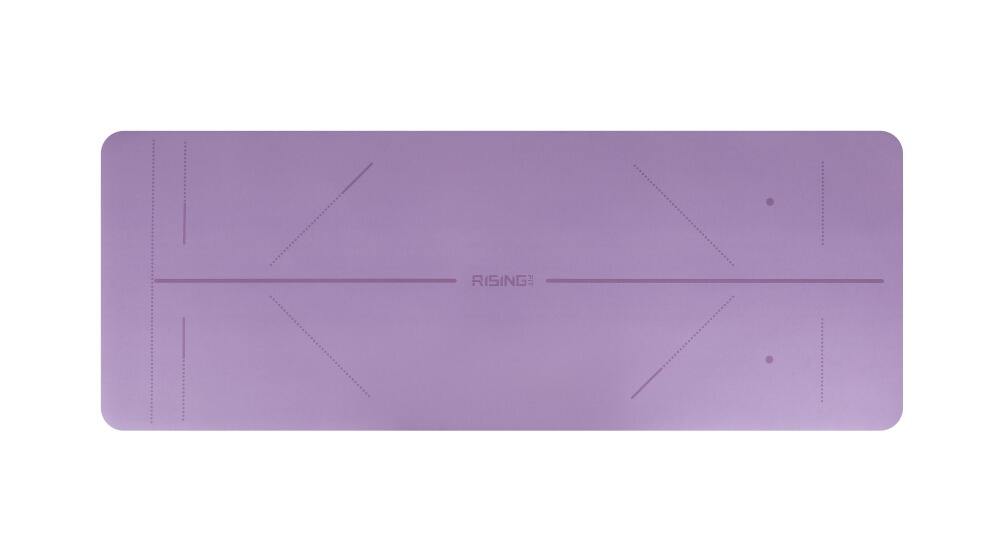Essential Strategies for Yoga Mat Maintenance in Commercial Settings
Managing bulk yoga mats in a gym or studio setting requires careful attention to cleanliness and maintenance protocols. Proper care of bulk yoga mats not only ensures a hygienic environment for your members but also significantly impacts your bottom line by extending equipment lifespan and reducing replacement costs. This comprehensive guide will explore professional methods, cost-effective solutions, and best practices for maintaining your yoga mat inventory while optimizing operational expenses.
Professional Cleaning Methods for Commercial Yoga Mats
Daily Cleaning Protocols
Implementing a systematic approach to daily mat cleaning is crucial for maintaining hygiene standards and mat longevity. After each use, staff should spray bulk yoga mats with an appropriate cleaning solution and thoroughly wipe them down with microfiber cloths. This immediate attention prevents sweat and bacteria from settling into the mat material, reducing the risk of odors and deterioration.
Creating a dedicated cleaning station with proper supplies and clear instructions helps ensure consistency in the cleaning process. Staff should be trained to identify signs of wear and tear during routine cleaning, allowing for early intervention when maintenance issues arise.
Deep Cleaning Procedures
Weekly deep cleaning sessions are essential for maintaining bulk yoga mats in optimal condition. This process involves a more thorough cleaning approach using specialized mat cleaning solutions and allowing sufficient drying time. Consider implementing a rotation system where mats undergo deep cleaning in batches, ensuring continuous availability for classes while maintaining high hygiene standards.
During deep cleaning, mats should be inspected for damages, properly sanitized, and allowed to air dry completely before returning to service. This preventive maintenance approach significantly extends mat lifespan and reduces replacement frequency.
Storage Solutions and Environmental Considerations
Optimal Storage Practices
Proper storage of bulk yoga mats plays a crucial role in their longevity and maintenance costs. Invest in wall-mounted or freestanding mat storage systems that allow for adequate airflow between mats. Avoid stacking mats for extended periods, as this can lead to moisture trapped between layers and accelerate deterioration.
Climate-controlled storage areas help prevent material breakdown and maintain mat integrity. Consider installing humidity control measures in storage spaces to protect your investment in bulk yoga mats and extend their serviceable life.
Environmental Impact Management
Selecting eco-friendly cleaning products not only benefits the environment but can also prove more cost-effective in the long run. Look for biodegradable cleaning solutions that are gentle on mat materials yet effective against bacteria and odors. This approach helps maintain mat quality while aligning with sustainable business practices.
Consider implementing a mat recycling program for when replacement becomes necessary. Many manufacturers now offer recycling options for bulk yoga mats, helping reduce environmental impact while potentially providing cost savings through recycling incentives.
Cost-Effective Maintenance Strategies
Preventive Maintenance Programs
Developing a comprehensive preventive maintenance program helps identify and address potential issues before they become costly problems. Regular staff training on proper handling and cleaning techniques ensures consistent care across all shifts and reduces unnecessary wear and tear on bulk yoga mats.
Track mat usage and maintenance history to optimize cleaning schedules and replacement timing. This data-driven approach helps in budgeting for new equipment while maximizing the lifespan of existing mats.
Budget-Friendly Solutions
Invest in high-quality cleaning supplies and equipment that offer long-term cost benefits. While premium products may have higher upfront costs, their efficiency and effectiveness often result in reduced labor time and better mat preservation. Consider bulk purchasing cleaning supplies to take advantage of volume discounts.
Implement a mat rental program for special events or peak periods rather than maintaining an excessive inventory. This flexible approach helps manage costs while ensuring adequate mat availability during high-demand times.
Staff Training and Quality Control
Employee Education Programs
Comprehensive staff training is essential for maintaining bulk yoga mats effectively. Develop detailed cleaning protocols and provide hands-on training sessions to ensure all employees understand proper cleaning techniques and maintenance procedures. Regular refresher courses help maintain high standards and address any new challenges that arise.
Create clear documentation of cleaning procedures and maintenance schedules, making it easily accessible to all staff members. This ensures consistency in mat care regardless of who is performing the maintenance tasks.
Quality Assurance Measures
Regular quality checks help maintain high standards in mat cleanliness and condition. Implement a system for tracking mat condition, cleaning frequency, and replacement needs. This data helps optimize maintenance procedures and justify budget allocations for equipment replacement.
Consider appointing a designated staff member to oversee mat maintenance and quality control. This ensures accountability and provides a point person for addressing any concerns or implementing improvements to the maintenance program.
Frequently Asked Questions
How often should bulk yoga mats be replaced in a commercial setting?
The lifespan of bulk yoga mats in commercial settings typically ranges from 8-12 months with proper maintenance. However, this can vary based on usage frequency, cleaning protocols, and storage conditions. Regular inspections should guide replacement decisions, with individual mats being replaced as needed rather than all at once.
What are the most effective cleaning solutions for bulk yoga mats?
Commercial-grade, pH-neutral cleaners specifically designed for yoga mats are most effective. Look for products that are both antimicrobial and safe for regular use on mat materials. Natural alternatives like diluted tea tree oil or vinegar solutions can also be effective while being cost-efficient.
How can gyms minimize operational costs while maintaining high hygiene standards?
Implement a comprehensive maintenance program that includes regular cleaning schedules, proper storage solutions, and staff training. Invest in quality cleaning supplies and equipment that offer long-term cost benefits. Track mat usage and maintenance data to optimize replacement timing and budget allocation. Consider implementing a mat rental program for peak periods to manage inventory costs effectively.


